Hello all, I am starting this thread to highlight good photos of Townsendia, whether found on the web, taken in the wild or in your garden... feel free to contribute.
I'll start with a photo I found on the older SRGC (Scottish Rock Garden Club forum), contributed by Geir Moen, showing a delicious shot of Townsendia spathulata 'Pryor Mountain form'... does anyone have any details about this form?
http://www.srgc.org.uk/discus/messages/283/12068.jpg
Comments
Re: Townsendia pics
There has been no response to your question, Mark, which I only just found, so I'll help out...
Also on the "Old" archived version of the SRGC Forum we learned a little more about this lovely plant from the nurseryman Graham Nicholls .... he wrote :" It is a difficult plant to grow not liking too much moisture and I have never had viable seed set. This plant is grown from collected seed Ev Whittemore sent to me three years ago. Just compare it with the usual form seen in the trade and see how furry the leaves are. This is the original species confirmed by John Grimshaw by checking with material sent back to Kew. I have only seen it in the Pryor Mouintains of Montana growing in tufa banks. "
Follow this link to the message Posted on Wednesday, April 12, 2006 - 2:41 pm: by Graham Nicholls to see more pictures.....
http://www.srgc.org.uk/discus/messages/283/27576.html#POST14832
Re: Townsendia pics
Excellent! Thanks for the update Maggi... or is this Ian?
Re: Townsendia pics
Excellent! Thanks for the update Maggi... or is this Ian?
'tis Maggi, Mark!
Glorious plant, isn't it? I don't grow it..... but I 'm off to look at Graham's site to see if I can remedy that! http://graplant.co.uk
Re: Townsendia pics
Here are three photos, of the Pryor Mountains form of Townsendia spathulata taken in the wild by Brian Welzenbach.
The photos were kindly passed to me for posting here by Graham Nicholls who got seed of this one from Brian. (and the 'Cottonballs' form recently featured with Brian's photos in the International Rock Gardener No. 5 May 2010 : http://www.srgc.org.uk/logs/index.php?log=international)
These are spectacular little daisies and great to have the pix from the wild: thanks to Brian Welzenbach!
As usual: please click on the photos to enlarge them.
Re: Townsendia pics
Shouldn't think such plants existed!
The second photo shows a whole community too of similar plants.
Re: Townsendia pics
Further to Maggi's posting yesterday here is a pic of my Pryor Mnts townsendia show plant before it became buried under glass & snow last winter and died a sorry death.
Graham
Re: Townsendia pics
Further to Maggi's posting yesterday here is a pic of my Pryor Mnts townsendia show plant before it became buried under glass & snow last winter and died a sorry death.
Graham
I had been very depressed had anything like that happened to me. Did you have a heavy snowfall that broke your glasshouse? I had much snow last winter and some shrubs and limb of trees broke.
Re: Townsendia pics
Further to Maggi's posting yesterday here is a pic of my Pryor Mnts townsendia show plant before it became buried under glass & snow last winter and died a sorry death.
Graham
Graham, what a gorgeous plant. Are you still growing this? I remember this one from your book, but have never seen seed listed anywhere. Townsendia condensata is another very unusual one that I like a lot.
Re: Townsendia pics
For those that haven't seen my greenhouse disaster go to http://www.alpinegardensociety.net/groups/Wiltshire and page down. This is the front page of the Wiltshire AGS group web site. My greenhouse is at the bottom of the page. From this page you can also navigate to various parts of the site to see our photoshoot and plants at our own local show. I will post some pictures of various townsendias soon as Mark started this thread by saying he would like to see some good ones.
Graham
Re: Townsendia pics
Here are a few townsendia pics. All plants have been grown by myself except the T. montana which I photographed on Cartherine Pass, near Snowbird during the NARGS conference there. Anne you remember our hike together to the alpine beach don't you. Iris preferred to to a bit of ironing back at the motel.
The first plant is the cottonball, sown September 2009 and flowered this week for the first time. Wonderful plant. T.condensata is the next one. Many people considered the cottonballs to be the same initially but it's no such thing. T. condensata has always been biennial with me.
T. exscapa is the next one. This was amazing, I was given seed by a friend whilst visiting her in Arizona. The plants had the largest flowers I have ever seen on this species. T. hookeri is the next one. A nice show plant but the thin silver leaves are prone to red spider in hot weather. T. incana is a nice show plant if you get the compact one, it is important to select the right seedlings here. However it is prone to collapse after about three years. T. leptotes a fine show plant but slow to fill a pot. T. mensana. Nice work if you can get it. Occasionally the seed crops up in seed lists (Not exchanges) and is reluctant to germinate well. However as you can see its a nice species. T. montana, as I said photographed during a very good hike to one of Anne Speigels favourite places. T. nuttallii, slow to grow to a large plant but well worth waiting for those nice pink flowers. And finally T. rothrockii an attractive species that has grown well for me in troughs.
There you are Mark a nice collection for you.
Graham
Re: Townsendia pics
Thanks Ian/Maggi and Graham, for some fantastic images of Townsendia species and forms; they're such delicious eye-candy. The ones from the Pryors are sensational, almost imitating South American Chaetanthera species. Graham, your images let us know these are indeed very growable plants, most worthwhile for a trough, rock garden, or alpine house. Sorry about your greenhouse devestation, I recall seeing this on SRGC. Hopefully you have rebuilt since then.
I still hope to do what I set out to do here, that is to do some armchair botanizing, and find and provide links to good images of many Townsendia species, saving hours traversing dead-end, unreliable, or otherwise unhelpful links.
Re: Townsendia pics
Hi Graham, I remember the hike to the "alpine beach" very well. A grand day for beautiful plants I still have Townsendia montana, which seems quite perennial - seed collected from Sunset Pass on another trip. I've had the same experience with Townsendia condensata, but it does set a huge amount of seed, much of which germinates even when scattered around the parent plant. Townsendia hookeri is one of my favorites, beautiful foliage. I find I can keep the townsendias going longer if they're in a trough as against the open garden, but I'm going to try them in the crevice gardens, new since your New York visit. If you think about it, a crevice garden is almost like a trough - each crevice is a very finite garden. I'll let you know how they do. I've seen Townsendia mensana in Utah - the foliage was spectacular and the seed germinated readily but the plants weren't perennial in my garden. When you see them on nature. the plants are small, although not as small as Townsendia minima. Have you ever grown that one? I always thought it should be ideal in a trough
Re: Townsendia pics
"Alpine beach"?? Graham and Anne, you're going to have to explain that one! ;D (Rarely are alpine lakes large enough to have the wave action to form what one would think of as a "beach"... so far as I imagine, anyway!?) I'm having trouble imagining what this might be, and I'm very curious!
Re: Townsendia pics
Looks like T. hookeri to my eyes...
Re: Townsendia pics
"Alpine beach"?? Graham and Anne, you're going to have to explain that one! ;D (Rarely are alpine lakes large enough to have the wave action to form what one would think of as a "beach"... so far as I imagine, anyway!?) I'm having trouble imagining what this might be, and I'm very curious!
Could this be 'loosely' described as an 'alpine beach'? Pragser Wildsee in the Dolomites and the BEAUTIFUL lake,
Re: Townsendia pics
Graham, would you be able to identify this one? Label lost.
I think T. hookeri, Anne.... cute as a button.
Cliff..... your "alpine beach " is magical.... wonderful photo 8) 8)
Re: Townsendia pics
Looks like T. incana to me Anne.
Graham
Re: Townsendia pics
Just to clear up the 'alpine beach' bit here are a few photos taken there when Anne. Joe & myself went hiking before the Snowbird conference. I highly recommend taking the hike as it's so rewarding. From Little Cottonwood Canyon drive up to Albion Basin & Park adjacent to the ski lift. Start hiking up. It climbs around 900' to reach Sunset Peak at 10240'. Here you are confronted by fantastic alpines growing in sand as if on a beach. You can view Catherine Lake from up here as well.
Graham
Re: Townsendia pics
Wow ... what a destination! Beautiful.
Re: Townsendia pics
Just to clear up the 'alpine beach' bit here are a few photos taken there when Anne. Joe & myself went hiking before the Snowbird conference. I highly recommend taking the hike as it's so rewarding. From Little Cottonwood Canyon drive up to Albion Basin & Park adjacent to the ski lift. Start hiking up. It climbs around 900' to reach Sunset Peak at 10240'. Here you are confronted by fantastic alpines growing in sand as if on a beach. You can view Catherine Lake from up here as well.
Graham
Graham, I remember that day and the plants so well. It's one of my favorite destinations. Elizabeth Neese explained some of the geology to me. There's a layer of sandstone over limestone and the sandstone has worn down making that lovely "alpine beach". The sand is very fine and comes over the toes of your boots and it's just dry as a bone. I remember picking up a rock and it disintegrated in my hand into sand. Really amazing. One of the hikes at the Conference was to the first part of the Pass but not as far as the place we went. Apart from the Townsendia montana and Phlox pulvinata, there's Linum kingii (very old specimens w/gnarly trunks), gorgeous old cushions of Astragalus kentrophyta v implexus, Astragalus miser, etc. Good thing Iris didn't come. She would have been so bored with all the oohs and ahs and photographing. I wish I had had a better camera then. Your wonderful pictures bring it all back.
Re: Townsendia pics
Just so that we can get a better sense where this place is (Sunset Peak, Catherine Lake, Albion Basin, and "the alpine beach"), here are three Google Maps showing the terrain in the area. We're talking about the Uintah Mts, in the Wasatch National Forest, Utah, USA. The first is a vicinity map, showing the location relative to Salt Lake City, Utah (the red pin is Sunset Peak). Map 2 shows the peak relative to Snowbird and that amazing canyon that runs west-east. Map 3 shows the peak in a closer view, with Catherine Lake and other lakes nearby.
I have driven by these mountains a number of times on my cross-country travels, always wanting to explore them, it remains a wishlist item.
Re: Townsendia pics
Every one of these is gorgeous, but I especially love the 'cottonballs' have they definitively been assigned to a species? Any particular location name to watch for in seedlists?
Here is another of my favourites, in the Alplains catalogue:
Townsendia jonesii v. lutea (2x4,Z5,P,L,3:6w) .... (W) Sevier Co., UT, 5412ft, 1650m. Ethereal yellow, stemless daisies. The reverse of the petals is lavender, imparting a mysterious tangerine overtone to the flower color. Elusive dweller of Arapien Shale deposits. Occasional cream forms in this population. On shale ridges
http://www.alplains.com/images/TownJonesLutea.JPG
hmm, the image on the paper catalogue is more impressive...
Re: Townsendia pics
This year Townsendia rothrockii flowered better than ever before, here are some pics covered early and full flowering.
In the following views, you can see a new plant for me, Arabis koehleri, a tiny thing only 2" (5 cm) in flower, with bright pink flowers. A couple of attractive North American native plants.
A couple days later, the Townsendia rothrockii flowers are fully expanded.
Re: Townsendia pics
It seems that I never shall get a complete collection of plants! There are always new ones to discover and wish for!
Cute little thing that Arabis, Mark, is it matforming or solitary?
Re: Townsendia pics
It seems that I never shall get a complete collection of plants! There are always new ones to discover and wish for!
Cute little thing that Arabis, Mark, is it matforming or solitary?
Trond, the plant of Arabis koehleri was from a NARGS seedling sale autumn 2010, so I don't know how it might develop, but my guess is from looking at the small North American Arabis species, they are not gregarious mat formers. The single flower stem you see was cut off today, no doubt by a chipmunk, so no hope of seed this year. I have declared all out warfare with chipmunks and squirrels, the latter are shredding and decimating Tulipa blooms currently, nipped off a number of Narcissus stems, and then started shredding blooms on Fritillaria pudica. It is varmint warfare here.
Re: Townsendia pics
It seems that I never shall get a complete collection of plants! There are always new ones to discover and wish for!
Cute little thing that Arabis, Mark, is it matforming or solitary?Trond, the plant of Arabis koehleri was from a NARGS seedling sale autumn 2010, so I don't know how it might develop, but my guess is from looking at the small North American Arabis species, they are not gregarious mat formers. The single flower stem you see was cut off today, no doubt by a chipmunk, so no hope of seed this year. I have declared all out warfare with chipmunks and squirrels, the latter are shredding and decimating Tulipa blooms currently, nipped off a number of Narcissus stems, and then started shredding blooms on Fritillaria pudica. It is varmint warfare here.
You have my sympathy! I know the feeling :( >:(
Re: Townsendia pics
McDonough, I use the pelletized mouse bait that you can buy at any hardware store. Put it in a container with an opening small enough to keep cats and dogs out. Or put some pellets in the burrow and cover with a rock. The risk is that the dying rodents will be caught by a cat or dog, and end up poisoning it. I have never seen this happen. I think it would take a huge amount of bait to harm a cat or dog.
Here is a clever trapping technique: http://www.youtube.com/watch?v=Q9cFspBjb-U
Re: Townsendia pics
McDonough, I use the pelletized mouse bait that you can buy at any hardware store. Put it in a container with an opening small enough to keep cats and dogs out. Or put some pellets in the burrow and cover with a rock. The risk is that the dying rodents will be caught by a cat or dog, and end up poisoning it. I have never seen this happen. I think it would take a huge amount of bait to harm a cat or dog.
Here is a clever trapping technique: http://www.youtube.com/watch?v=Q9cFspBjb-U
Heya Gene, thanks for the info. I've seen the video before, but I watched it again, and it reminds me to set up some vole traps this weekend, I have lots of new activity in the yard. So far as pelletized mouse bait, I have found that bait ineffective for chipmunks, they don't go for it much. But, the chipmunks are very easy to catch in a chipmunk size Havahart trap (http://www.havahart.com/store/live-animal-traps), and I have started my daily catching and redistribution of these little beasties. I also have a larger squirrel-sized Havahart trap, caught and relocated a squirrel these last 4 days in a row. This works to temporarily to reduce the population, but it's an ongoing exercise. By the way, I will be splitting this subject off into it's own topic called "Garden Adversity" or some such name. :)
Re: Townsendia pics
Came across some excellent photo galleries of Townsendia, thought I'd share them here.
From the Southwest Colorado Wildflowers site, some fine photos of Townsendia.
These links show the following species: glabella, incana, annua (awesome), rothrockii, and leptotes:
http://www.swcoloradowildflowers.com/White%20Enlarged%20Photo%20Pages/to...
http://www.swcoloradowildflowers.com/White%20Enlarged%20Photo%20Pages/to...
Townsendia leptotes:
http://www.swcoloradowildflowers.com/White%20Enlarged%20Photo%20Pages/to...
http://www.swcoloradowildflowers.com/White%20Enlarged%20Photo%20Pages/to...
Townsendia rothrockii:
http://www.swcoloradowildflowers.com/Pink%20Enlarged%20Photo%20Pages/tow...

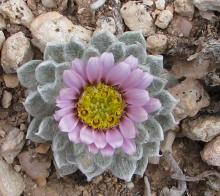
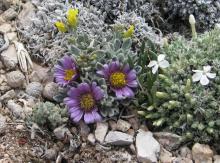

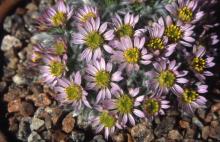
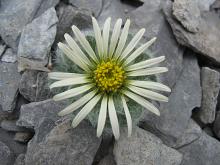
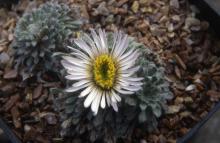
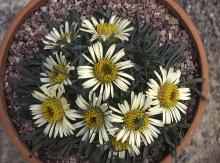
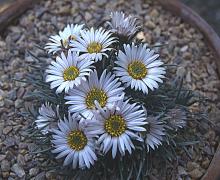
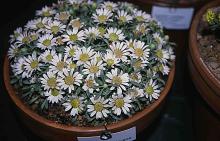
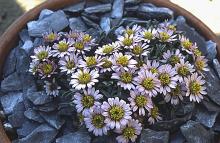
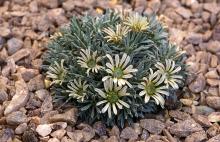
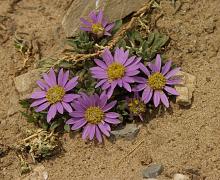
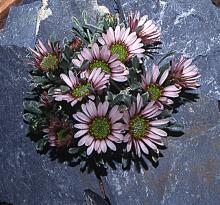
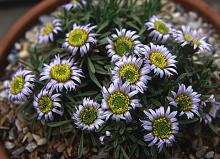
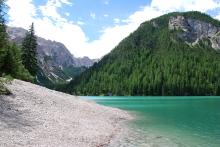
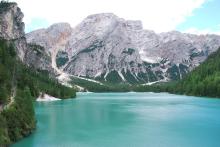
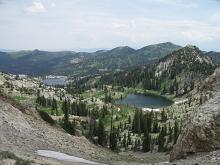
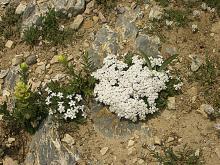
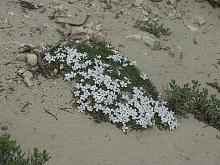
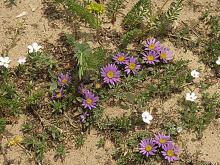
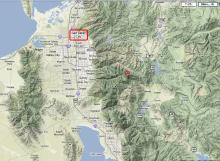
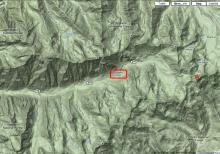
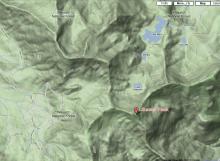
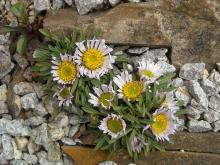
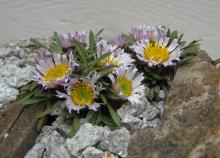
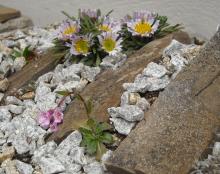
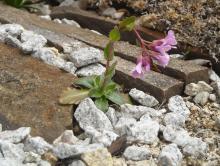
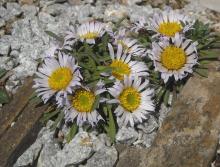
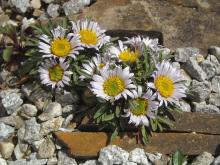
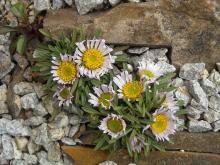
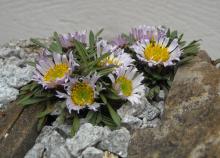
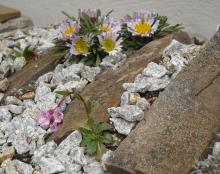
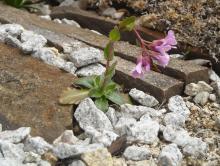
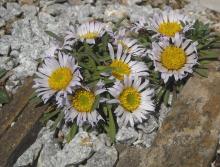
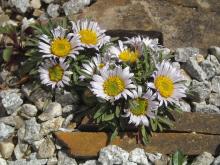
That is one hoary Townsendia...and I mean that in the most flattering way!